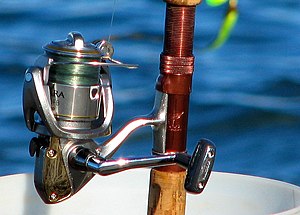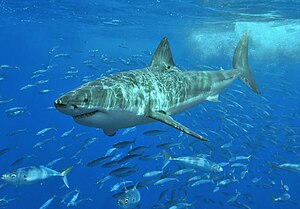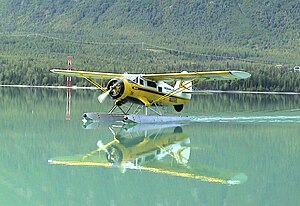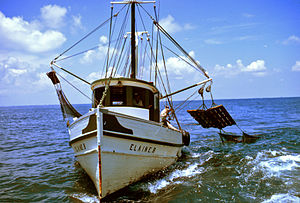 Image via Wikipedia
Image via Wikipedia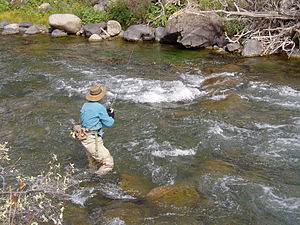 Image via Wikipedia
Image via Wikipedia Image via Wikipedia
Image via Wikipedia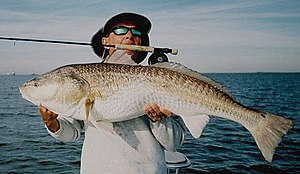 Image via WikipediaNew England Fishing Destinations - Fly Fishing in the Northeast
Image via WikipediaNew England Fishing Destinations - Fly Fishing in the NortheastThere are many excellent New England fishing destinations for you to consider. If you are a fly fisherman seeking some fine trout fishing or perhaps landlocked salmon, then here are some suggestions. You can choose from a variety of streams, brooks and lakes. You can also choose a variety of methods from trolling, fly casting on a classic trout river to small stream fishing for native brookies. It is all available throughout the beautiful states of New England.
If you are looking for a region to go trout fishing in New England there are many great regions to choose from. In Connecticut, only a couple of hours drive from New York City, you will find the Housatonic and Farmington Rivers in the northwest section of the state. Both these rivers offer a great opportunity to land some big fish, primarily browns. They may get rather crowded with fisherman due to their close proximately to NY but they are convenient for many and the fishing can be outstanding. Further north in Massachusetts the Berkshire Mountains in the western section is home to the Westfield and Deerfield Rivers, along with many smaller streams. Both the Westfield and the Deerfield have excellent trout populations, the potential for large fish and a wilderness fishing experience can be enjoyed. Both of these rivers have many tributaries that also should be explored. The central part of Massachusetts contains the Swift River, often considered the Mecca of the state for fly fisherman. Below Quabbin Reservoir in Belchertown this tailwater fishery can be challenging but the fishing is well worth it. Experienced anglers here will tell you that long fine leaders and tiny flies are often the best approach to catching the wary and strong rainbows. The Millers River is also a top notch trout fishing destination in central Mass. The areas near Athol and Orange off excellent fishing for brown trout.
In eastern Massachusetts there are many outstanding trout ponds to be found in Plymouth and Cape Cod. Long pond, Little Pond, Fearing Pond, Peters Pond, Hamlin Pond, Lovells Pond are just a few of the popular locations. The Nickerson State Park in Brewster has some outstanding trout fishing in Cliff Pond and Flax Pond. These are all deep, spring feed ponds with holdover ability and are well stocked by the state. Spring fly fishing and bait fishing can be excellent. As the weather warms the trout tend to hold deep in the cooler water. Be ready to troll deep or wait for the evening hatch to get action on the surface.
Some anglers will tell you that the best trout fishing in New England is in New Hampshire. Lake Winnipesaukee, The Pemigewasset River, Sugar River, Mascoma River, Ammonoosuc River, Androscoggin River and the upper Connecticut River all can provide a great fishing experience. Profile Lake in Franconia Notch, is well known for excellent brook trout fishing. It was also known for being the best location to view the interesting rock formation, the Old Man in the Mountain, prior to its collapse in 2003.
The great state of Maine is both large and full of many great trout fishing locations. Maine is also full of many areas that offer great landlocked salmon fishing. Landlocked salmon are one of the most exciting of all freshwater fish and it is a real treat to hook one on a fly rod! The Kennebec River, Penobscot River, Machias River, Grand Lake Stream and the Kenebago River are just a few of the many rivers that would make up a list of Maine's best trout streams. Moosehead Lake, Sebago Lake and Rangley Lake are all areas to consider as fishing destinations. Throughout New England there are many lakes and streams and they are all full of trout just waiting to bite your fly! Tight lines!
If you are looking for a region to go trout fishing in New England there are many great regions to choose from. In Connecticut, only a couple of hours drive from New York City, you will find the Housatonic and Farmington Rivers in the northwest section of the state. Both these rivers offer a great opportunity to land some big fish, primarily browns. They may get rather crowded with fisherman due to their close proximately to NY but they are convenient for many and the fishing can be outstanding. Further north in Massachusetts the Berkshire Mountains in the western section is home to the Westfield and Deerfield Rivers, along with many smaller streams. Both the Westfield and the Deerfield have excellent trout populations, the potential for large fish and a wilderness fishing experience can be enjoyed. Both of these rivers have many tributaries that also should be explored. The central part of Massachusetts contains the Swift River, often considered the Mecca of the state for fly fisherman. Below Quabbin Reservoir in Belchertown this tailwater fishery can be challenging but the fishing is well worth it. Experienced anglers here will tell you that long fine leaders and tiny flies are often the best approach to catching the wary and strong rainbows. The Millers River is also a top notch trout fishing destination in central Mass. The areas near Athol and Orange off excellent fishing for brown trout.
In eastern Massachusetts there are many outstanding trout ponds to be found in Plymouth and Cape Cod. Long pond, Little Pond, Fearing Pond, Peters Pond, Hamlin Pond, Lovells Pond are just a few of the popular locations. The Nickerson State Park in Brewster has some outstanding trout fishing in Cliff Pond and Flax Pond. These are all deep, spring feed ponds with holdover ability and are well stocked by the state. Spring fly fishing and bait fishing can be excellent. As the weather warms the trout tend to hold deep in the cooler water. Be ready to troll deep or wait for the evening hatch to get action on the surface.
Some anglers will tell you that the best trout fishing in New England is in New Hampshire. Lake Winnipesaukee, The Pemigewasset River, Sugar River, Mascoma River, Ammonoosuc River, Androscoggin River and the upper Connecticut River all can provide a great fishing experience. Profile Lake in Franconia Notch, is well known for excellent brook trout fishing. It was also known for being the best location to view the interesting rock formation, the Old Man in the Mountain, prior to its collapse in 2003.
The great state of Maine is both large and full of many great trout fishing locations. Maine is also full of many areas that offer great landlocked salmon fishing. Landlocked salmon are one of the most exciting of all freshwater fish and it is a real treat to hook one on a fly rod! The Kennebec River, Penobscot River, Machias River, Grand Lake Stream and the Kenebago River are just a few of the many rivers that would make up a list of Maine's best trout streams. Moosehead Lake, Sebago Lake and Rangley Lake are all areas to consider as fishing destinations. Throughout New England there are many lakes and streams and they are all full of trout just waiting to bite your fly! Tight lines!
Do know all the best fly fishing locations in New England? You can learn more at New England Fishing Destinations. Our site provides outstanding information on fishing destinations and techniques. David Waters is an avid fisherman and outdoorsman with over 30 years of experience fishing, hiking and camping. Updated fishing information is also available at http://flyfishingfun.wordpress.com A resident of Massachusetts and a graduate of the University of Massachusetts, David has been helping other fly fisherman enjoy the sport in a variety of ways. He is also author of The Fitness Center Handbook.
Article Source: http://EzineArticles.com/?expert=David_M._Waters 






